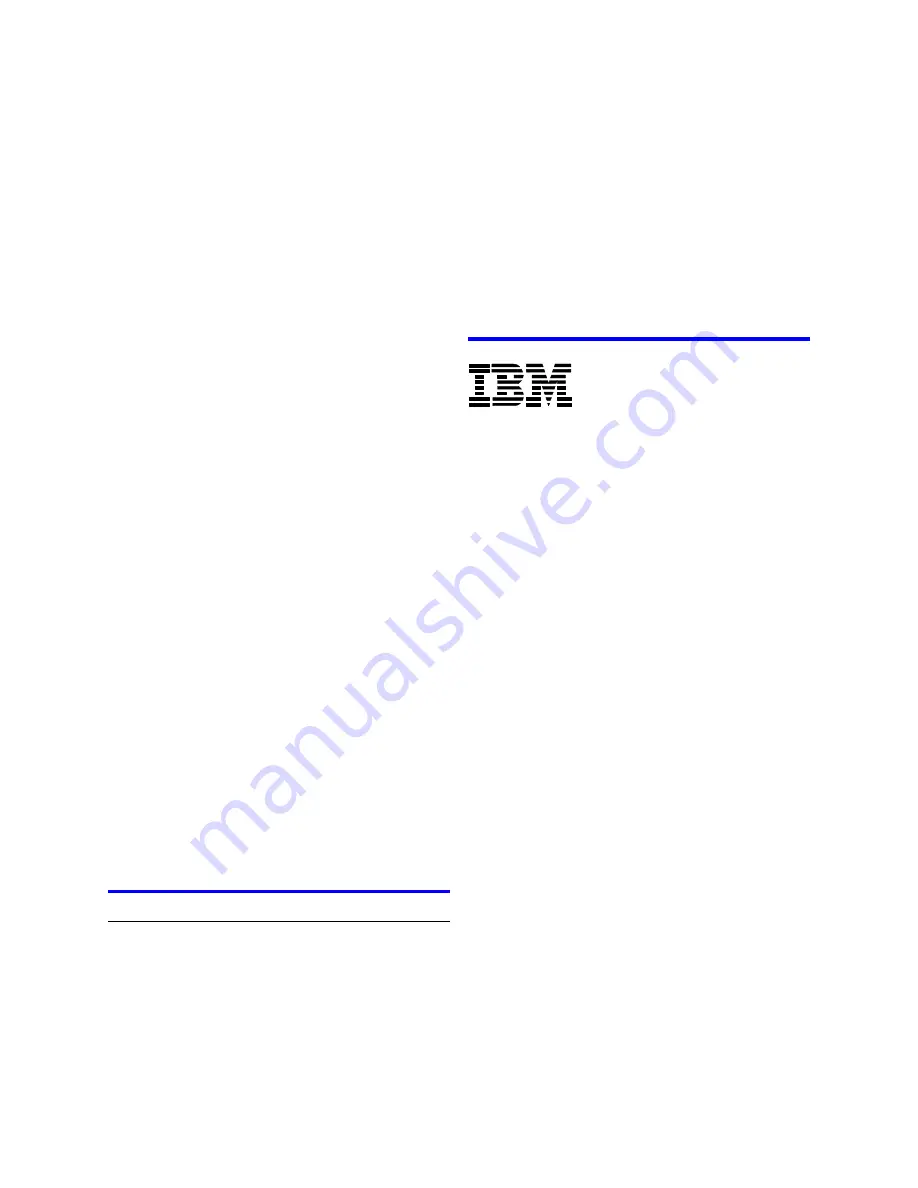
SPECIAL NOTES:
Ÿ
For this drive to operate in LVD mode all SCSI de-
vices including the SCSI bus host adapter must be
LVD devices.
Ÿ
The drive is designed to detect if the SCSI bus is
LVD or SE. The drive will function based upon the
mode that it detects. If for some reason the drive
cannot detect a SE mode bus, place a jumper on
pins 5 and 6 of jumper block J-4 to force SE mode.
Ÿ
On 68 pin drives termination power must be pro-
vided. In most cases it is provided by the host
adapter. If it is not provided by the host adapter,
install a jumper on pins 3 and 4 of jumper block J-4
to enable termination power. (The 80 pin drive
does not provide termination power.)
8. For a 68 pin drive attach the power cable and en-
sure that one end of the SCSI cable is connected
to the host adapter. Attach a terminator to the end
of the SCSI cable furthest from the host adapter. If
the drive is the only device on the SCSI cable,
attach it to the cable connector closest to the ter-
minator. Additional drives may be attached to any
unused connector. (The 80 pin drive is plugged
into server backplanes and requires no cables.)
9. Using the appropriate brackets or rails, mount the
drive with any of its six surfaces facing down.
Retrieve any loose screws or parts from within the
computer.
10. Ensure the proper routing of cable(s).
11. Plug in your computer. Do not turn it on.
12. Insert the operating system (OS) setup diskette
into the floppy drive.
13. Turn on your computer.
Ÿ
If the system boots up, turn off your computer
and replace the cover.
Ÿ
If your system does not boot up, turn off your
computer and check all connections and set-
tings. Turn on and boot the sytem.
Ÿ
If the system still fails to boot up, turn off your
computer and remove the new drive to return
the system to its original configuration. Contact
the IBM Technology Group Support Center.
Partitioning and formatting (using DOS 5.0 or later)
CAUTION: Partitioning and formatting will destroy any
previous data. When partitioning and formatting a drive
in a system with more than one drive, be sure that you
select the correct hard drive.
1. With the OS setup diskette inserted in the floppy
drive, turn on the computer.
2. At the DOS prompt type FDISK, press [ENTER], and
follow the instructions on the screen.
3. To format the primary system drive, type FORMAT
C:/S at the DOS command prompt and press
[ENTER]. The /S parameter makes C: the operating
system startup drive.
4. To format a second drive (not C:), type FORMAT X:
(where X is the drive letter assigned by FDISK) at
the DOS prompt and press [ENTER].
5. Remove the diskette and restart your computer. The
partitioning and formatting is complete.
6. Install the operating system.
®
© International Business Machines Corporation 1999
www.ibm.com/harddrive
IBM Technology Group Support Center
Telephone: 888.426.5214 or 507.286.5825
E-mail: [email protected]
Singapore Technology Group Support Center
Telephone: 1800.418.9595 or 65.6.418.9595
E-mail: [email protected]
UK Technology Group Support Center
Telephone: 44.1475.898.125
E-mail: [email protected]
Germany Technology Group Support Center
Telephone: 49.7032.153050
E-mail: [email protected]
IBM Systems Storage Division
5600 Cottle Road
San Jose CA 95193
www.ibm.com/storage
Printed in the United States of America
12-99
All Rights Reserved
IBM is the registered trademark and Ultrastar is the trademark of International Business
Machines Corporation.
Other company, product, and service names may be trademarks or service marks of others.
Produced by the IBM Technology Group Support Center.
Hard Disk Drive Specifications for Ultrastar 36LP (Revision 1.0)
Product Description data represents IBM’s design objectives and is provided for comparative
purposes; actual results may vary based on a variety of factors. This product data does not
constitute a warranty. Questions regarding IBM’s warranty terms or methodology used to
derive this data should be referred to the IBM Technology Group Support Center. Data
subject to change without notice.
Date: 9th December, 1999
IBM storage products
Page 2
IBM Technology Group Support Center
version 1.0




















